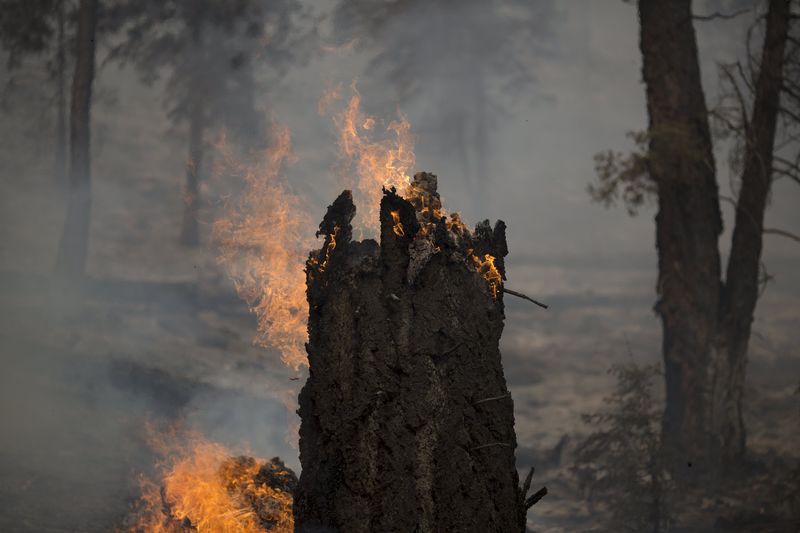(Updates with new evacuations)
By Eric M. Johnson
SEATTLE, Aug 20 (Reuters) - U.S. crews battling a flurry of
wildfires raging unchecked across the Pacific Northwest
contended with high winds on Thursday, a day after three
firefighters were killed and four others were injured in
Washington state.
Authorities late Thursday ordered the immediate evacuation
of the small community of Tonasket, nestled along the bank of
the Okanogan River in north-central Washington, impacting about
1,000 people.
On Wednesday, some 4,000 households in the riverfront towns
of Twisp and Winthrop, in the foothills of the Cascade mountains
about 75 miles (120 km) southwest of Tonasket, were also forced
to flee the encroaching blaze.
The Twisp blaze is just one of more than 70 large wildfires
or clusters of fires in several drought-stricken Western states,
the bulk of them in Washington, Oregon, Idaho, California and
Montana, the National Interagency Fire Center in Boise reported.
Dozens of homes have been reduced to ruins in Idaho and
Oregon in recent days.
The fires have stretched civilian firefighting resources,
prompting authorities to call the U.S. Army and Canadian crews
to help , as well as mobilize personnel from
Australia and New Zealand for the first time since 2008.
Seventy-one fire managers and specialists from those two
countries were due to arrive in Idaho on Aug. 23.
U.S. wildland blazes have claimed the lives of at least 13
firefighters and support personnel so far this year, four more
than died in the line of duty during all of 2014, the
interagency fire center said.
President Barack Obama has directed his administration to
consult with local and state officials while the threat
persists.
ERRATIC WINDS COMPLICATE EFFORTS
The Twisp blaze has proven the deadliest. Three U.S. Forest
Service firefighters in an engine crew died on Wednesday while
battling the flames, which overtook their position after they
were involved in a vehicle accident, Okanogan County Sheriff
Frank Rogers said.
Among the dead was Thomas Zbyszewski, a physics major and
actor at Whitman College in southeastern Washington. Four other
firefighters were injured, one of them hospitalized in critical
condition with burns over 60 percent of his body.
The Twisp-area fire, part of a larger cluster of fires
dubbed the Okanogan Complex, has burnt 7,873 acres (3,194
hectares) of rural brush and dry timber about 115 miles (185 km)
northeast of Seattle since erupting on Wednesday, said Rick
Scriven, a spokesman authorized to speak about the blaze.
As of late Thursday afternoon, crews had yet to establish
firm containment lines around the blaze, Scriven said, adding
that suppression efforts across the Northwest had been
complicated by "sporadic and erratic winds."
The blaze near Twisp was burning in Okanogan County, the
same area impacted by last July's massive Carlton Complex fire,
the state's largest on record, which destroyed about 300 homes
as it blackened 250,000 acres (100,000 hectares).
About 50 miles (80 km) south of Twisp, the so-called First
Creek fire was posing a renewed threat to populated areas after
engulfing more than 68,000 acres (27,000 hectares), with 39
homes and 28 outbuildings destroyed days ago near the resort
town of Chelan, according to sheriff's spokesman Rich Magnussen.
The First Creek blaze jumped containment lines on Wednesday
evening, triggering road closures and prompting authorities to
extend evacuation orders to some 800 people, Magnussen said.
Speaking in Chelan, U.S. Forest Service Chief Tom Tidwell
told reporters his agency expects to exhaust its firefighting
budget by early September but said necessary funds and assets
would continue to be made available where needed.
The governors of Oregon and Idaho joined Washington state in
calling up state National Guard troops backed by military
aircraft to help combat blazes.
